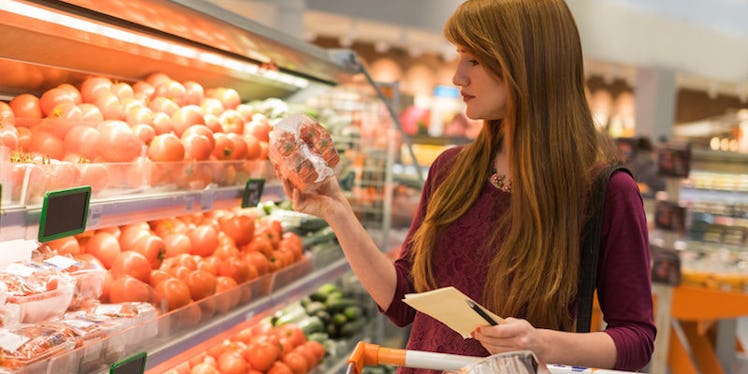
This App Breaks Down Food Labels To Show How To Burn Off What You Eat
Deciphering food labels can sometimes feel like trying to do quantum physics.
Even just reading them can be hard on some packages, especially when they're hiding in random little folds.
Look at how small the writing is here, and how it's hidden underneath the fold.
Granted, all packaged foods need to have labels somewhere on the outside of the packaging, so on smaller food items this is sometimes the only way.
But I'm basically blind, so it can be hard to read all of this tiny writing.
Enter the Sage Project.
Sage is an app that breaks down nutrition facts in a way that's actually comprehensible and doesn't require a magnifying glass.
So far, the app has over 20,000 packaged and fresh foods in its database through partnerships with different grocery stores, such as Whole Foods.
There are a handful of apps out there that already help break down nutrition facts, but none go as far as Sage.
Besides providing users with information about additives and where food originates, the coolest thing about it is you can create a profile so it only shows you the information you care about the most.
Some people want to avoid preservatives, but don't care about calories, while others are watching their sodium intake. The creators of Sage know there's no one-size-fits-all for health. Everyone has different needs.
Sage also shows you how much exercise you'd need to do to burn off the calories from what you eat. Plus, the app is super interactive, making it easy for users to wrap their heads around all the facts.
They feature a jump-roping candy bar, for example, to show how much and what kind of exercise you would need to burn off the calories from a Clif Bar.
Here's the catch, though. Most of the foods in their database are what you would find if you shopped at Whole Foods, so it might not be useful to everyone just yet.
According to its site, there are 455 Whole Foods stores in North America and the UK. Compare that to Walmart's 5,229 stores in the US alone, and you have a rather large lack of information.
Hopefully, Sage will expand their database to help people across the country and not just those with access to health stores that sell mostly organic foods.
Even though the FDA recently made updates to the readability of the nutrition facts label as we know it, they're still confusing.
Sage breaks it all down in plain English. That way you're not scratching your head in the grocery store trying to figure out if ingredients like citric acid are something you want in your body.
Educating people on nutrition is important, and this is an excellent step toward getting the facts to people who find reading labels daunting.
Citations: An App to Deconstruct Your Food (New York Times)